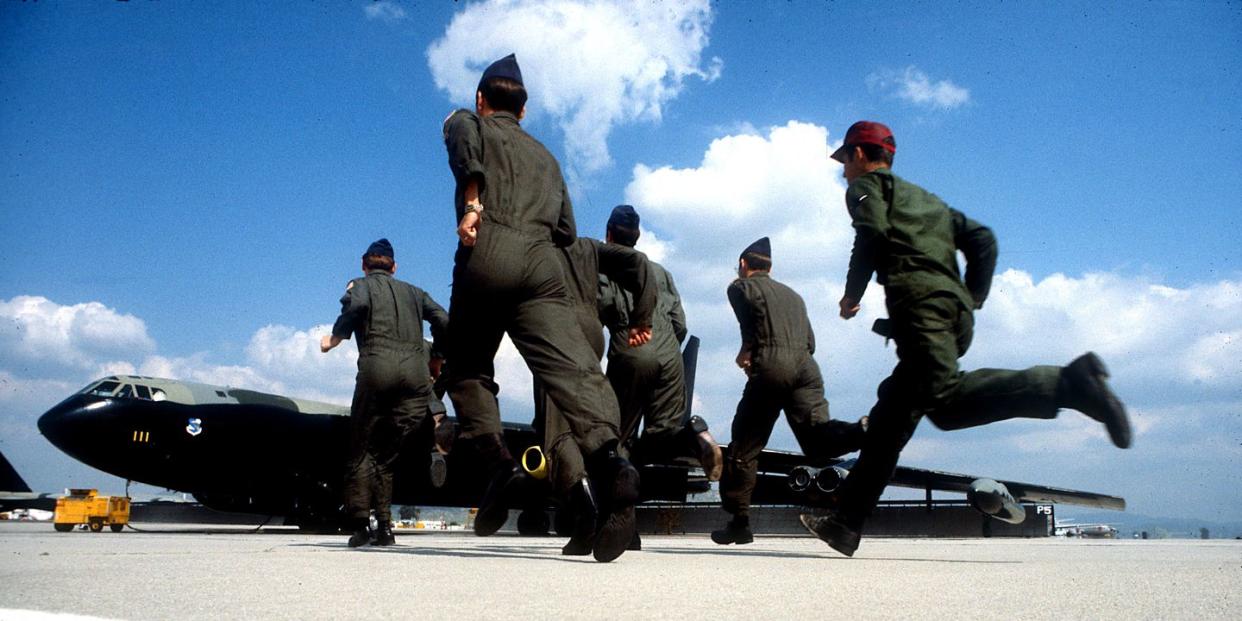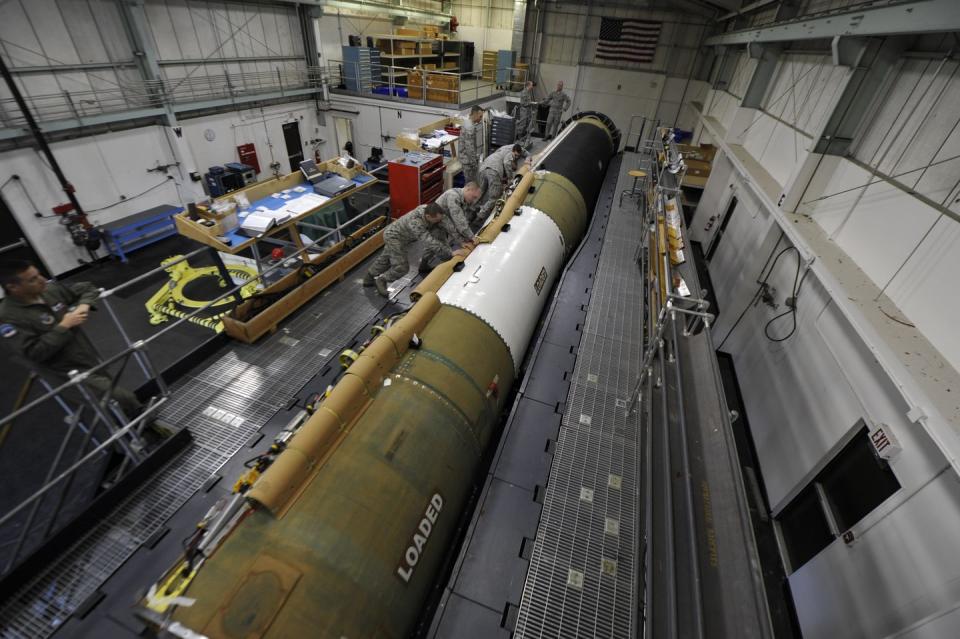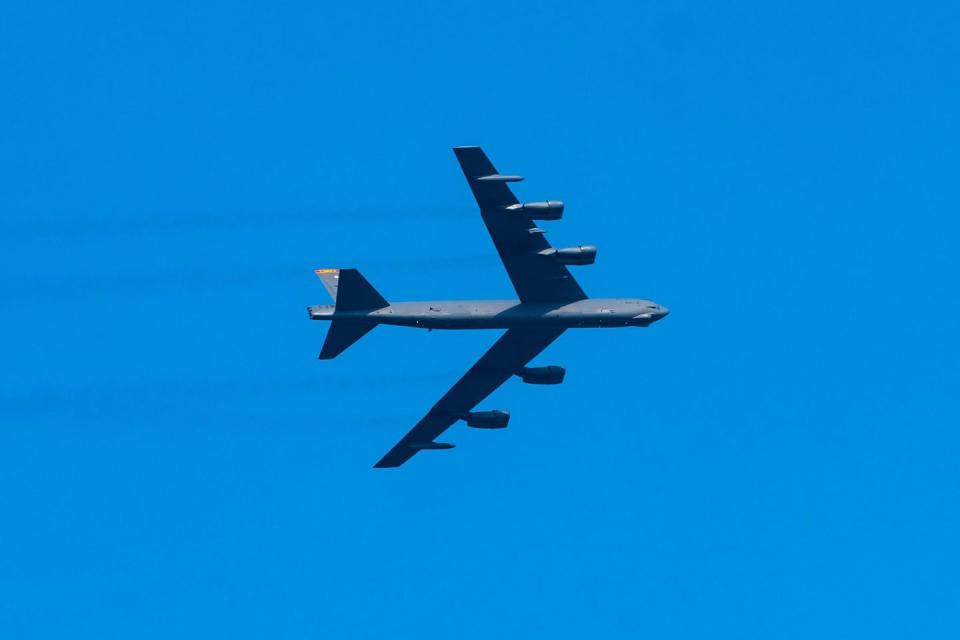U.S. Bombers Might Have to Go Back on Nuclear Alert

The head of the U.S. Strategic Command (STRATCOM) says he would ask to put bombers back on nuclear alert if the U.S. failed to replace the Minuteman-III.
The Pentagon is planning to replace the Minuteman-III with a new intercontinental ballistic missile, but some critics think such a move is unnecessary.
STRATCOM’s commander says he would need two legs of a nuclear triad, or dyad, on alert at all times, forcing a portion of the bomber force to be ready to fly at a moment’s notice.
The head of the U.S. Strategic Command will ask bombers to go back on nuclear alert status if the Pentagon doesn’t replace the Minuteman-III intercontinental ballistic missile (ICBM).
➡ Join Pop Mech Pro and get exclusive answers to your most pressing military questions.
Adm. Charles Richard made the comments during a discussion of the nuclear force structure in a Senate Armed Services Committee hearing on Tuesday, according to Defense News. President Joe Biden’s administration is preparing to assess the U.S.’s strategic nuclear arsenal while the Pentagon is preparing to order the development of the Ground Based Strategic Deterrent missile to replace the aging Minuteman-III.

The U.S.’s strategic nuclear weapons are divided among three groups: Minuteman-III ICBMs, Ohio-class submarines armed with Trident D-5 submarine-launched ballistic missiles, and B-2 and B-52H strategic bombers.
Each arm of the “triad” is known for specific advantages. ICBMs, for example, are fast, responsive, always ready for action, and capable of hitting their targets within 20 to 30 minutes. Missile submarines, meanwhile, are invulnerable to surprise attack, providing an “ace in the hole” that ensures hundreds of U.S. nukes would survive a bolt from the blue, ready to devastate the aggressor. Finally, bombers are known for their ability to be re-targeted in mid flight, or recalled back to base in the event of a misunderstanding or cease-fire.
Richard’s point is that today’s nuclear triad is actually a “dyad” in peacetime, as the bomber force doesn’t keep bombers fueled up and armed with thermonuclear weapons as it did during the Cold War.
In the 1960s, the Air Force’s Strategic Air Command kept up to 12 fully armed bombers in the air at all times, where they couldn’t be destroyed by a sudden nuclear attack. During the 1962 Cuban Missile Crisis, that number surged to 75 planes per day.

Today, nuclear-capable B-2 and B-52H bombers still train for nuclear missions, but the relatively small force of 96 bombers (20 B-2, 76 B-52H) doesn’t maintain a force on alert status.
Strategic nuclear warfare is an existential threat to the U.S., and Richard is hedging against uncertainty. From a military planner’s perspective, relying on just one delivery platform—whether they’re submarines, ICBMs, or bombers—is reckless.
If the ICBM force was shuttered and bombers weren’t placed on alert, it would fall on the submarine force to provide constant deterrence. If a sudden technology for detecting submarines made it easier to sink missile subs, or a technical defect in the sub’s W-76 thermonuclear warhead made them suddenly unreliable, it could sideline the entirety of the force.
Here’s a Cold War-era video of B-47 Stratojet bomber crews scrambling to get into the air during a drill:
You Might Also Like

